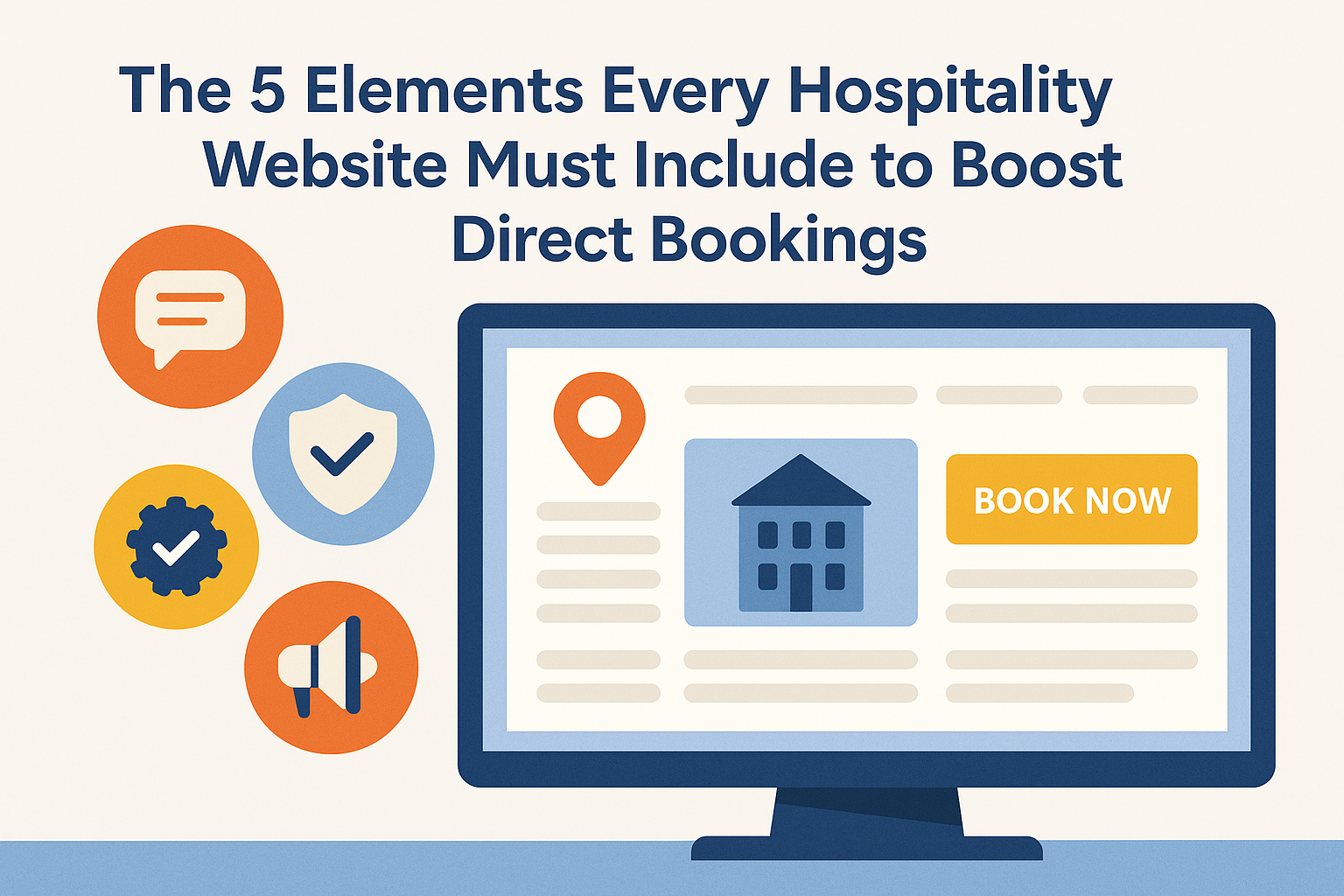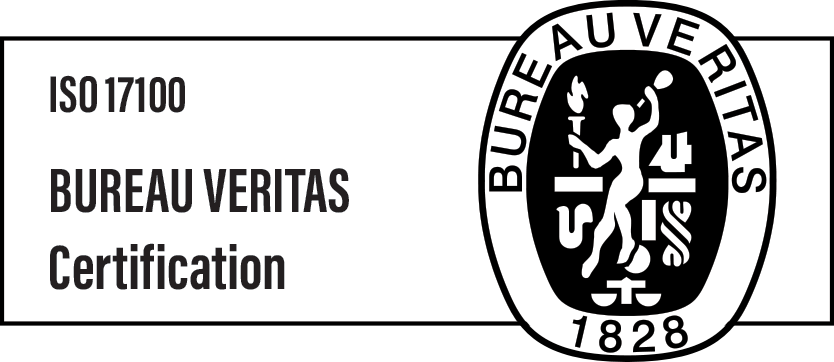The 5 elements every hospitality website must include to boost direct bookings

Your website sells more than rooms or meals- it sells trust
In today’s hospitality market, your website is more than a digital storefront. It’s often the very first interaction a guest has with your brand. And that first impression can make or break their decision to book directly—or look elsewhere.
While third-party platforms can help drive visibility, direct bookings remain your most profitable channel. But many hotel and restaurant websites still struggle with the basics. Clunky layouts, unclear calls to action, missing languages, and generic messaging leave potential guests confused or unmotivated.
The solution isn’t more content. It’s smarter content. Thoughtful messaging. Consistent tone. And an experience that feels tailored to every guest—no matter where they’re from or what language they speak.
This article walks you through five key elements every hospitality website must include to convert casual visitors into confident bookers. Whether you’re redesigning your site or refining what’s already there, these tips will help you build stronger connections and better results.
1. Clear, localized calls to action that move guests forward
Your call-to-action (CTA) is the moment of truth. It’s the invitation, the nudge, and often the deciding factor in whether a guest books with you or not. But too often, CTAs are either too subtle or too pushy, and that’s before translation errors come into play.
A phrase like “Book now” may work well in English. But in another language, it might need to be softened, made more formal, or adjusted to match local expectations. A literal translation rarely captures the tone, urgency, or emotional appeal needed to motivate action.
This is where professional localization becomes essential. Instead of translating words one-to-one, an experienced Language Service Provider (LSP) will tailor the CTA for each market. They’ll make sure your message still feels like your brand, but also feels native to the person reading it.
Beyond just the button copy, localization should include the page design, placement, and even color choices. All of these details affect how visible and clickable your CTA is across different cultural contexts.
Remember: guests won’t click if they don’t feel confident. A clear, well-placed, and culturally adapted CTA builds trust and drives bookings from the very first interaction.

Clear, localized calls to action that move guests forward
2. Multilingual content that speaks to every guest, naturally
Guests don’t just want to understand your website—they want to feel understood. That’s why multilingual content is essential for any hospitality brand welcoming international visitors. But the goal isn’t to simply provide text in multiple languages. It’s to create an experience that feels native, not translated.
Too often, brands rely on automatic tools like Google Translate to save time. While these tools might capture the general meaning, they rarely reflect cultural tone, expectations, or brand voice. The result is content that feels robotic or even off-putting, especially in a high-touch, service-driven industry like hospitality.
A professionally localized website ensures that every version is written with cultural nuance. This means more than adjusting grammar or vocabulary. It involves adapting sentence structure, tone, idioms, and even layout elements to suit the habits and expectations of different audiences.
For example, a Japanese guest might prefer polite and reserved language, while a Spanish-speaking guest may respond better to warmth and enthusiasm. In both cases, simply translating the English version won’t deliver the emotional clarity that builds trust.
It’s also important to go beyond the homepage. Room descriptions, booking flows, cancellation policies, menus, confirmation emails, and even loyalty program terms should be localized in full. These are the details guests rely on when deciding to book or return.
When your content feels local, it tells guests they matter. And when people feel seen and respected, they’re far more likely to trust your brand—and complete a booking directly.

Multilingual content that speaks to every guest, naturally
3. Trust signals that reassure global visitors
Before anyone books a stay or makes a reservation, they ask a basic question: “Can I trust this place?” Your website’s design and messaging must deliver a clear, confident yes. And for international guests, this assurance often depends on details that go far beyond beautiful photos or compelling copy.
Trust signals come in many forms—verified badges, security icons, customer reviews, recognizable payment methods, or official certifications. These elements send the message that your property is safe, professional, and legitimate. But if those signals are only in English, or not culturally adapted, they may go unnoticed or misunderstood.
Translating guest reviews and testimonials is one of the simplest but most powerful ways to build trust. A visitor from France will relate more to a fellow French traveler’s experience. A business guest from Germany will appreciate reading about reliable Wi-Fi and early check-in—in German, on a professional-looking review widget.
Payment security is another major factor. International guests want to see logos they recognize—Visa, Mastercard, PayPal, or regional options like Sofort or iDEAL—and instructions in their own language. When they don’t, they may abandon the process entirely.
Don’t forget about policies either. Cancellation terms, privacy statements, and COVID-19 protocols must be translated accurately and presented clearly. If a guest has to guess what’s allowed, they’re less likely to commit.
Trust is built through language, design, and consistency. Make sure every guest, in every language, gets the same sense of clarity and confidence when they visit your site.

Trust signals that reassure global visitors
4. Mobile-first, SEO-smart, and locally optimized
Even the best hospitality content won’t convert if no one finds it or if it doesn’t load well on mobile. Today’s travelers research and book across devices, time zones, and languages. That means your site must work fast, look great, and rank well in local search engines.
Multilingual SEO is more than inserting translated keywords. It includes optimizing page titles, meta descriptions, alt text, and URLs for each language version. It also involves selecting the right search terms for each market, because a keyword that works in English may have no traction in Spanish, Japanese, or Polish.
Your Language Service Provider should help you localize SEO elements intentionally. That means aligning copy with search behavior, not just translating phrases. For example, a term like “family hotel near city center” might be searched differently in every region, depending on how families travel or what amenities matter most locally.
Mobile performance is equally critical. Your site should be responsive, lightweight, and easy to navigate on a smartphone—especially for international users who may rely on mobile data or slower connections. Booking engines, form fields, and navigation menus should all be intuitive across languages and devices.
Google and other search engines prioritize usability, speed, and relevant content. So do your guests. When you optimize for both, you don’t just attract traffic—you attract qualified visitors ready to book.
5. Consistent brand voice across every language
Your brand’s voice is part of what makes it recognizable and trustworthy. Whether it’s warm and welcoming, sleek and modern, or calm and professional, that voice should come through in every language your site offers. Unfortunately, many multilingual websites lose that consistency.
This happens when translations are handled separately, by different vendors or rushed through machine tools. One language version might sound polished and on-brand, while another comes across as flat or overly formal. These inconsistencies may not seem critical at first glance, but they create a disjointed user experience. Guests notice when your message doesn’t feel cohesive, and it can subtly erode their trust.
Consistency builds confidence. It reinforces the impression that your hotel or restaurant pays attention to details—not just in your services, but in how you speak to your guests. That’s why tone-of-voice alignment across all markets matters. A skilled Language Service Provider (LSP) will not only translate your content accurately but also match your tone and intent in every language.
To maintain this consistency, consider implementing brand voice guidelines and requesting linguistic review. It’s a simple step that helps every visitor experience your brand the way it was intended—whether they’re reading in English, German, Spanish, or Japanese.

Consistent brand voice across every language
The path to more direct bookings starts with smarter content
A well-designed hospitality website isn’t just beautiful—it’s functional, multilingual, and built for trust. The right elements work together to reduce friction and guide your visitors toward booking with confidence.
That means using clear, localized calls to action. Speaking in your guests’ native languages. Providing trustworthy details. Optimizing your content for search. And maintaining a consistent tone throughout.
Guests today are discerning, digital-first, and culturally diverse. When your content reflects that, they notice—and they book. Partner with an LSP that doesn’t just know languages, but understands hospitality, user experience, and conversion. Because it’s not just what you say—it’s how you make guests feel.
Ready to transform your website into your highest-performing sales channel? Start with content that’s made for every guest.

